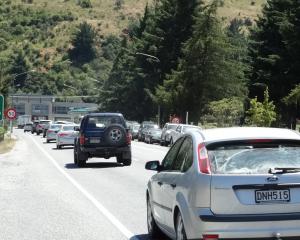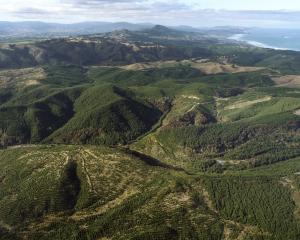Ever since Frank Sinatra, the Carpenters and the Mamas and Papas leased their Lear jets, riding with the expectations of a major concert tour is the notion private jets will be involved in some way.
They might simply jet in the wealthy artists who are accustomed to the private-jet lifestyle, or transport enhanced staging and related equipment.
In any event, private jets are now considered de rigueur for either a tour by a headline act or the occasional visit to Dunedin and Queenstown by an A lister, et al.
The fact a band has a private jet to carry them and their equipment also transmits a positive resonance of expectation the show will be bigger, brighter and better than ever, thus bolstering public interest, translating into ticket and/or album sales ... The headline media grabber for British rock band Iron Maiden preceding their 2016 world tour was that they had a brand-new jumbo jet (leased from Air Atlanta Icelandic), with the group's frontman, Bruce Dickinson, being trained for his licence to fly the four-engined monster to gigs around the globe.
And this rated ahead of the fact that the group was to release its first album in more than five years etc.
The huge jet, named ED FORCE ONE, will be liveried with IRON MAIDEN across the fuselage.
As before with their 757-200 in 2011, and the Rolling Stones with their 737-200, and the Backstreet Boys and numerous other bands/stars with their 767s.
I recall how DEEP PURPLE emblazoned across a leased Tiger jet boosted media interest and ticket sales way back in 1975, and I also recall the late Peter Grant, then manager of Led Zeppelin, lamenting to me that leasing their 707 nearly sent the band broke, but was nonetheless a very necessary tool of trade for touring rock groups throughout America, even then.
Today, however, the proliferation of touring bands to offset the decline in record sales etc is coming at the cost of huge carbon footprints.
In response to universal concertgoer concerns over global warming, carbon emissions and sustainability, the music industry and promoters are taking steps to ameliorate their market perception by reducing their own carbon emissions.
In 2008 there was a flurry of activity when planting of forests was considered a viable way of becoming carbon neutral.
Even Formula 1 and V8 Supercars jumped into the tree-planting paddock.
When pitching for V8 Supercar naming rights sponsorship, I had included in our marketing collateral materials the fact that ‘‘Big Pond and V8 Supercars Australia were to plant 15,000 native trees around Australia and New Zealand to offset the carbon emissions including those from racing at events, transport for racing teams to events, and air travel''.
Formula 1 (F1), which can produce 231 tonnes of CO2 per car per season, plus an aggregate 463 tonnes per team per season when all transportation factors are added, has also engaged in tree planting to help offset its carbon footprint.
The world's largest concert promoter, Live Nation Inc (which also owns Ticketmaster and brought Fleetwood Mac to Forsyth Barr Stadium in Dunedin last year), is also proactive about reducing the carbon footprint from the 90 million attendees at its concerts each year.
The Live Nation-produced U2 360° Tour allegedly produced CO2 emissions equivalent to leaving a lightbulb running for 159,000 years or sending the group to Mars and back.
UPS, which handled all transport for Pearl Jam, offset carbon by initiatives such as huge plantings on the Garcia River Forest Project in Northern California.
The offset of U2's 360° Tour emissions would require the planting of more than 20,000 trees a year, over years.
Now, it is also understood rock groups might reduce their carbon footprints up to 75% by using sea transportation.
Good news for Port Otago but simply too slow for the 120 gigs over 15 months, or 44 gigs over a 12-month standard tour programme.
In Dunedin, one of our major assets is council-owned City Forests, which has more than 20,300ha of forest land.
City Forests has been an active member of the NZ Emissions Trading Scheme since 2008 and it sequesters significant carbon annually.
City Forests has some carbon credits available for sale but the majority must be retained to meet future harvest liabilities.
While this company has sold carbon credits in the past, it has not done so in recent years because of low carbon prices.
These are now recovering but not yet to a level to make trading economically worthwhile.
However, it remains a possibility an organisation like Live Nation, with its sustainability partnerships with UPS engaging in tree planting, could well enter an arrangement with our stadium management and City Forests.
They could structure a deal whereby Live Nation guarantees the stadium one play night per super group and their investment in enough tree planting to offset the carbon footprint of, say, a super group's world concert tour.
●Murray Stott is a trademark agent.











